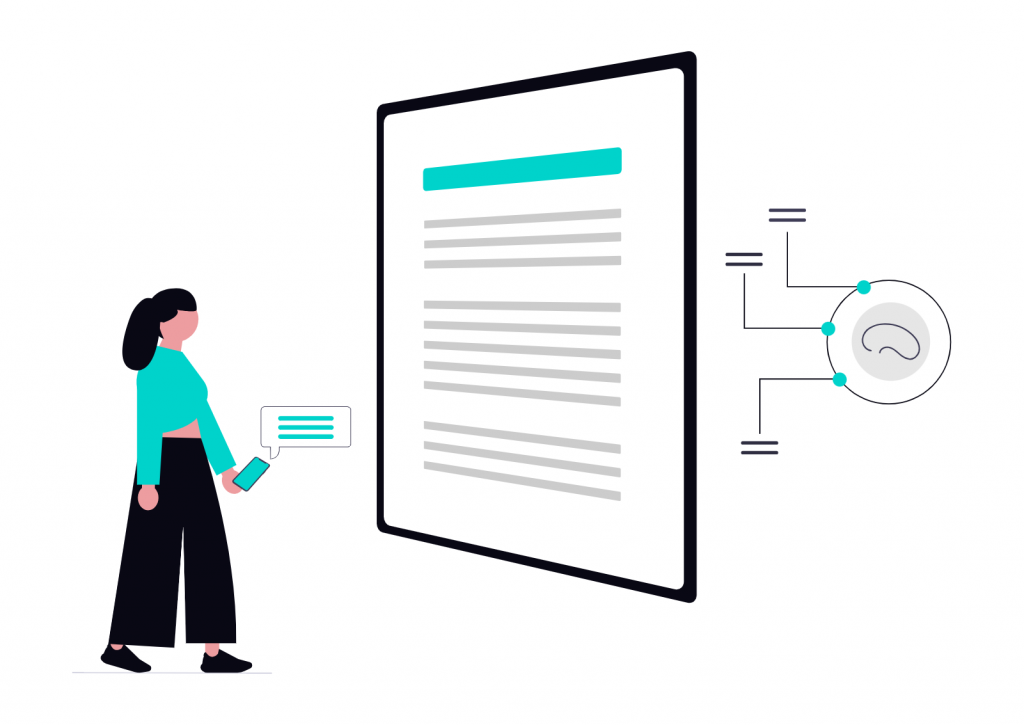
With so many terms flying around these days in the world of technology, it’s totally normal to feel a little lost. We know that many of you wonder where does LLM vs generative AI stand. They’re really not that different… but not that similar either. Let’s break it down and see what each means for localization professionals that want to stay up to date with the latest tech.
LLM and generative AI
Large Language Models (LLMs) are a subset of machine learning models trained on vast corpora of textual data. They are designed to understand, generate, and manipulate human language. These models operate by predicting the next word or token in a sequence, based on probabilistic patterns learned during training.
Generative AI refers more broadly to any AI system capable of producing content (any type, no just textual data) rather than just analyzing or classifying input. LLMs fall under the generative AI umbrella when used to create human-like language, but not all generative AI is based on LLMs.
In localization, where we try to adapt content linguistically and culturally for a target market, we use both LLMs and generative AI. They each have their specific role, but they serve different functions and both have their own strengths and weaknesses.
LLMs and generative AI in localization
When used the right way, LLMs can be surprisingly good at handling language tasks that are not limited to just basic translation. They can grasp nuance, adjust the tone, and rewrite content in a way that fits the intended context. So they’re handy for transcreation and for generating localized content in areas like marketing or customer support.
Give a LLM the right (linguistic) cues and it can rework a product description originally written for an audience into something that feels natural and persuasive to someone in a totally different region. It understands that it has to adapt idioms, adjust the sentence structure, and even choose the right level of formality.
But there’s a catch: LLMs aren’t built specifically for localization. They’re general-purpose language models, not end-to-end translation systems. So they’re not exactly equipped out of the box to handle things like managing approved terminology lists, tapping into translation memories, or keeping formatting consistent across multiple languages. They also have a tendency to make things up (you may have heard of AI hallucinations).
Generative AI can do voice dubbing, image and UI adaptation, and dynamic content generation across modalities. In multimedia localization, generative AI can automatically generate lip-synced video subtitles or adapt on-screen text in graphics. As products become more immersive (think AR/VR or video games), the role of multimodal generative AI will only grow in significance.
Where it gets blurry
As we now know, LLMs are a type of generative AI when used for content creation. You can use a LLM to translate or paraphrase a paragraph, but a broader generative AI system can also do things like render translated text onto an image, generate localized speech with matched emotion and prosody, or modify layouts based on text expansion/contraction.
Here, the LLM is just one component in a pipeline of generative AI tools. So you might need integrated systems that combine LLMs with other generative components. Naturally, you have to support these with optimized workflows and human review.
Integration with localization platforms
Nowadays, most enterprise-grade localization platforms like POEditor are beginning to embed LLM capabilities directly into their toolsets. If you use our TMS, you can pick between three of the most popular LLMs: Claude, Gemini, or OpenAI. However, it’s important to be aware that such integrations still rely heavily on translation memories, term bases, and human linguists for validation. Generative AI beyond LLMs tends to be managed in separate tools or services.
Bottom line
If we could condense the answer to the LLM vs generative AI debate in just one sentence, it would be: LLMs are a small part of generative AI but generative AI is so much more than an LLM. LLMs are powerful tools for language tasks, but they are not end-to-end localization systems. Generative AI, as a broader category, extends the possibilities of localization across many different mediums. Getting informed on how each works allows you to build better localization pipelines, choose the right tools, and mitigate risk.